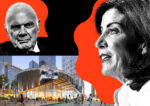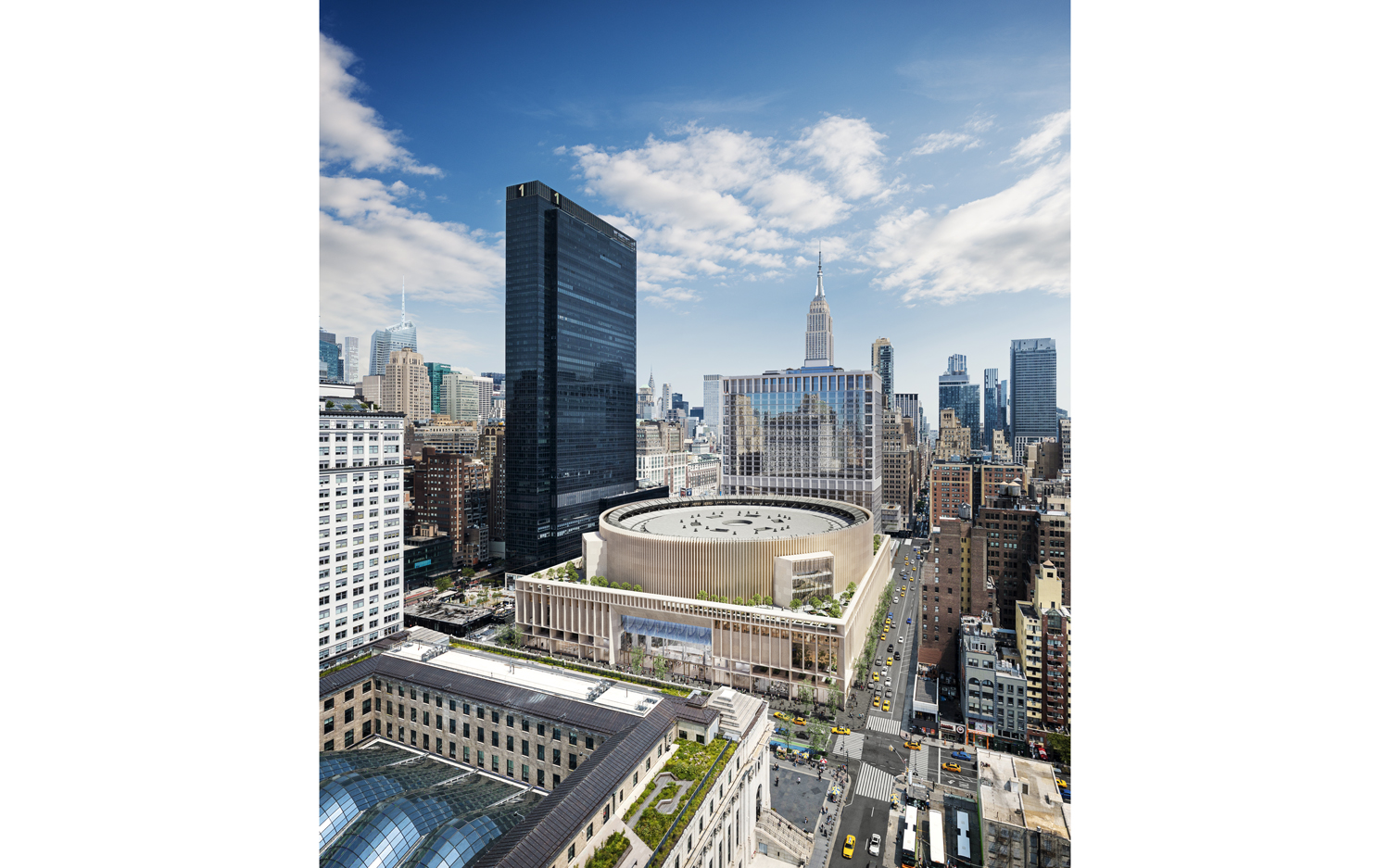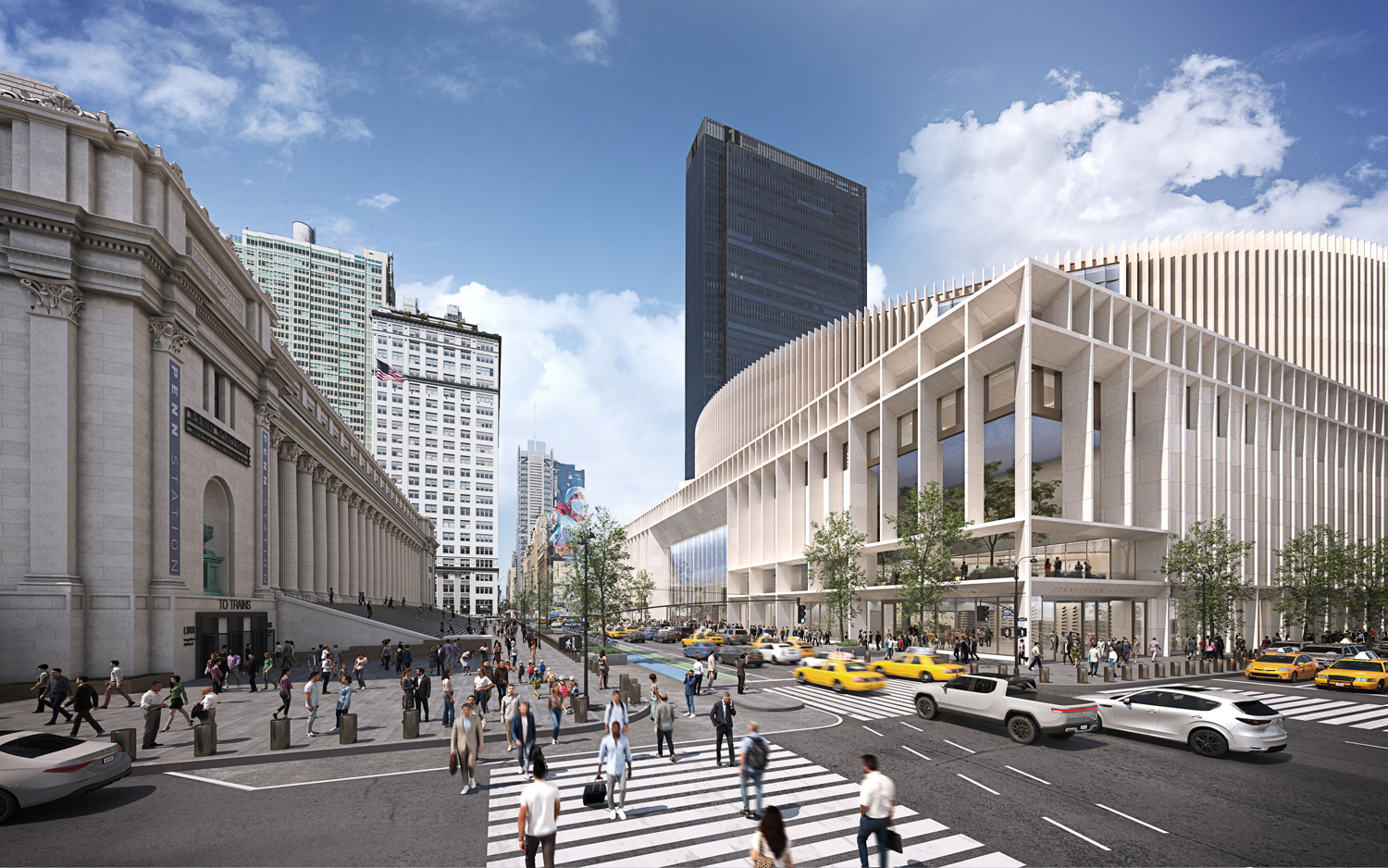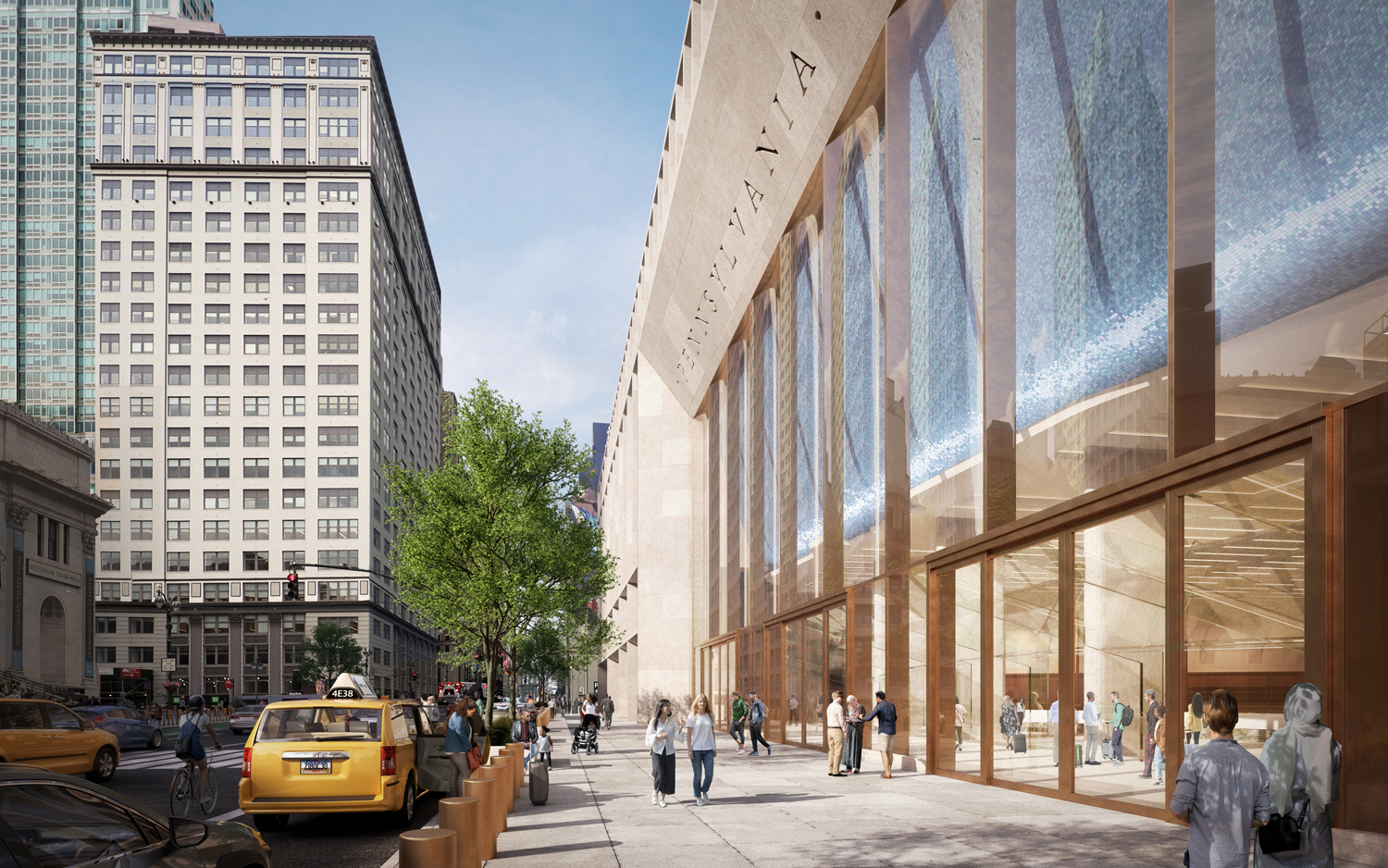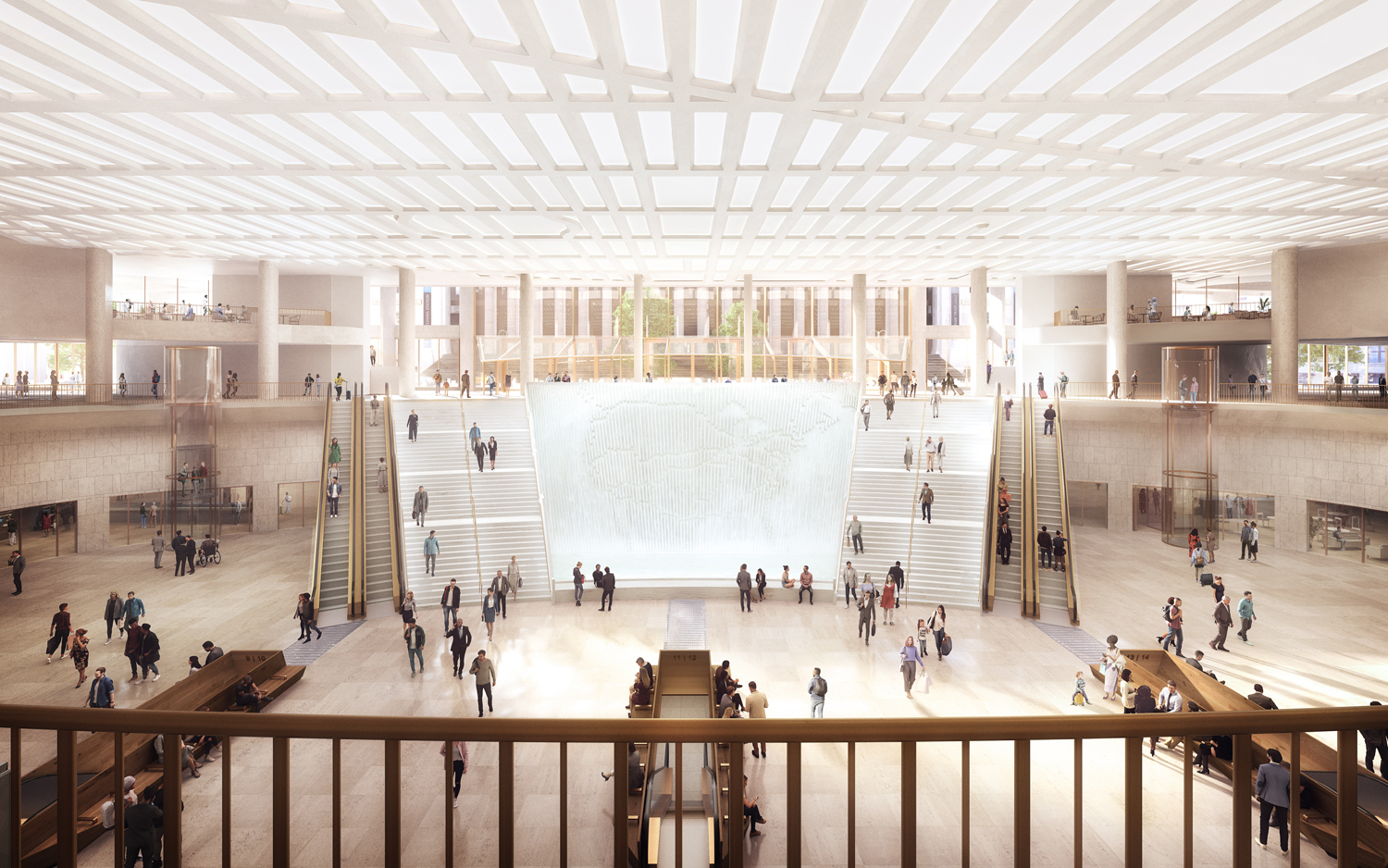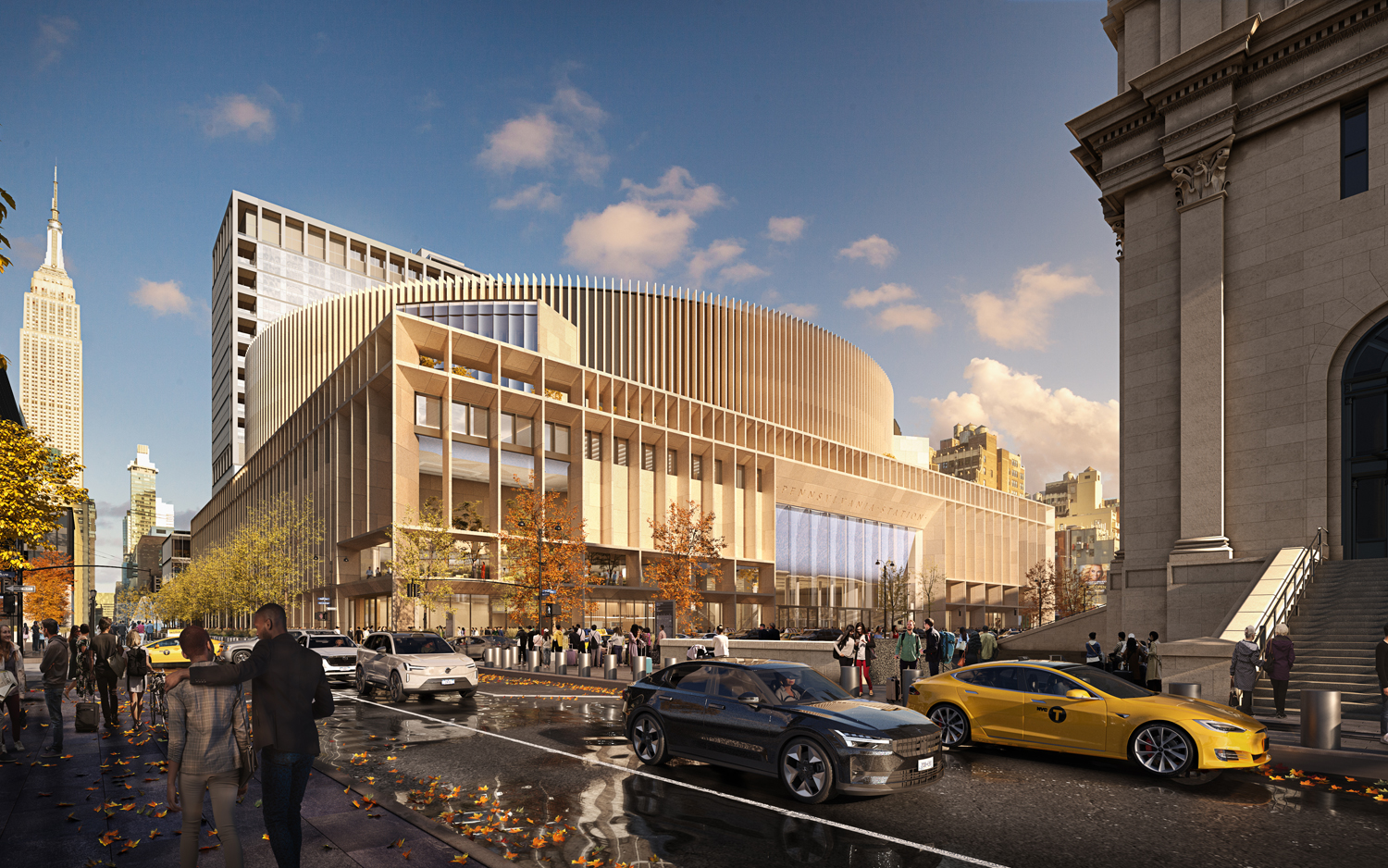For an incredibly complex project, the pitch for Penn Station is simple: Our idea is better, cheaper, and probably won’t get you sued.
That is the message of a campaign launched by ASTM North America, which is leading a team that aims to be awarded the long-sought overhaul of the transit hub. The group estimates its plan would cost $6 billion, or $1 billion less than projections by the state for its own plan.
In ASTM’s alternative, the firm would buy the Hulu Theater from Madison Square Garden for less than $500 million and demolish it. That is a price that, according to the team, MSG has suggested (earlier reports had pegged the acquisition cost at $1 billion).
Razing the venue would eliminate problems with how trucks get in and out of the arena — an issue at the heart of debates about renewing MSG’s special permit.
ASTM North America, a subsidiary of an Italian firm, was part of the MTA’s first public-private partnership to upgrade more than a dozen stations. Its Penn team includes some heavy hitters, including CEO Patrick Foye, who previously chaired the MTA and ran the Port Authority, and Vishaan Chakrabarti’s PAU and HOK, which are helping to redesign LaGuardia’s Terminal B. Lendlease has also worked on ASTM’s Penn plan.
But — and this is a big but — the state has been moving on a separate track. On Monday, Gov. Kathy Hochul announced the “start of the design process” for overhauling Penn. Hochul said that she was open to all ideas for the station, but is continuing with a $58 million contract awarded last year for preliminary architecture and engineering work.
That deal doesn’t preclude other firms from tackling the project — a request for proposals would be issued after an environmental review — but it could limit what kind of renovation can be done at Penn.
Hochul also indicated that the redesign would be based on the MTA’s master plan for the station, which includes creating a mid-block train hall and excludes a grand Eighth Avenue entrance. A representative for the MTA indicated that the agency is dubious about an entrance there, which is less trafficked than the Seventh Avenue side of Penn, but will study it during the initial design phase.
“Governor Hochul is moving full-speed ahead with plans to improve Penn Station and put commuters first,” a spokesperson for the governor said in a statement. “Once the preliminary design phase of this project is complete, the RFP process for the construction phase will begin and we will review all submissions.”
ASTM hopes the governor will instead issue an RFP for a master planner for Penn, allowing it to move forward with a progressive private-public partnership model, which calls for early involvement in every aspect of the project.
“I’m an optimist. I believe that the decision makers want to do the right thing for commuters,” Foye said during a presentation at PAU’s office in Union Square.
The team was heartened by the governor’s acknowledgement that the designs presented by the state were “conceptual.” It is also emphasizing the amount of engineering work that has gone into its plan.
“Anyone can do a rendering,” Charkrabarti said. “For something this complicated, you can’t just do a rendering and imagine that you have a process.”
ASTM would create a 55-foot entrance on Eighth Avenue, where a light-filled concourse would be made possible by the removal of the Hulu Theater. Elimination of the theater’s mechanical equipment would allow for a new, internal loading area for trucks, which would enter on West 33rd Street and exit on West 31st Street.
Janno Lieber, who runs the MTA, has been skeptical of the idea of removing the theater. He has pegged the cost of replacing it with a new entrance at $2 billion.
Like the state’s plan, ASTM’s calls for a new mid-block train hall. But there are significant differences. The rail agencies have proposed lowering part of a defunct taxiway owned by MSG to accommodate truck deliveries. Also, the state’s plan for a new train hall requires the removal of a pedestrian bridge that includes HVAC equipment “critical” to Rangers games, according to MSG.
ASTM’s plan does not require the removal of the bridge, a move the team believes could invite litigation.
The Farley Building across Eighth Avenue echoes the McKim, Mead & White-designed Penn Station that was demolished more than half a century ago. ASTM’s Penn renovation would similarly complement Farley, with a limestone or granite facade and a modernized colonnade.
MSG, railroads at odds
Whether ASTM’s plan moves forward or is added to the graveyard of grand, abandoned visions for the station, a fight is brewing between the rail agencies and MSG.
In its quest for a new special permit to continue operating the arena, its owner has clashed with the MTA, Amtrak and NJ Transit over its loading operations on West 33rd Street. In a report submitted to City Planning, the rail agencies said these loading operations are “incompatible” with plans to renovate Penn Station. To be compatible, the arena “must agree to collaborate on property swaps,” including its interest in a defunct taxiway on Eighth Avenue.
MSG has balked at this characterization, writing to City Planning last week that “the conceptual plans for the Penn Station reconstruction do not work,” and that its willingness to cooperate with the agencies does not mean “in any way” that it is agreeing to “transfer ownership of our private property, at less than fair market value.”
Under ASTM’s plan, the firm would operate and manage the station for 50 years, with an expected 8 percent to 11 percent return through annual payments from the rail agencies of about $250 million.
The group would provide $1 billion in equity upfront for the redesign, then rely on roughly $2 billion in public subsidy — primarily grants from the U.S. Department of Transportation — and $3 billion in federal loans. That approach requires elected officials and a multitude of rail and federal agencies to sign on.
The governor this week said the master plan would tap an initial $1.3 billion that the state has already set aside for the project (part of which is included in ASTM’s estimates), and is hopeful that the state can secure federal funding.
Members of the ASTM team repeatedly referred to its relationship with MSG as “collaborative.” But when asked how Vornado Realty Trust felt about its plan, they were hesitant. Foye said they have had productive conversations with Steven Roth’s real estate investment trust. Chakrabarti said the redesign would enhance the value of Vornado’s property around Penn. ASTM’s Peter Cipriano chimed in that he thinks that Vornado “thinks it looks great.”
Vornado did not immediately return a request for comment. Though the governor has set aside the broader megadevelopment surrounding Penn, much of which involved Vornado sites, any redesign of the station would require cooperation from the company.
Chakrabarti said the proposed expansion of the station and other projects contemplated for Penn are “critically important,” but revamping the existing station is the centerpiece.
“Really, we consider ourselves to be the jelly in the donut,” he said. “To make all of this come together as a coherent place, you have to fix the station, which is where the vast majority of the people are.”
Read more

